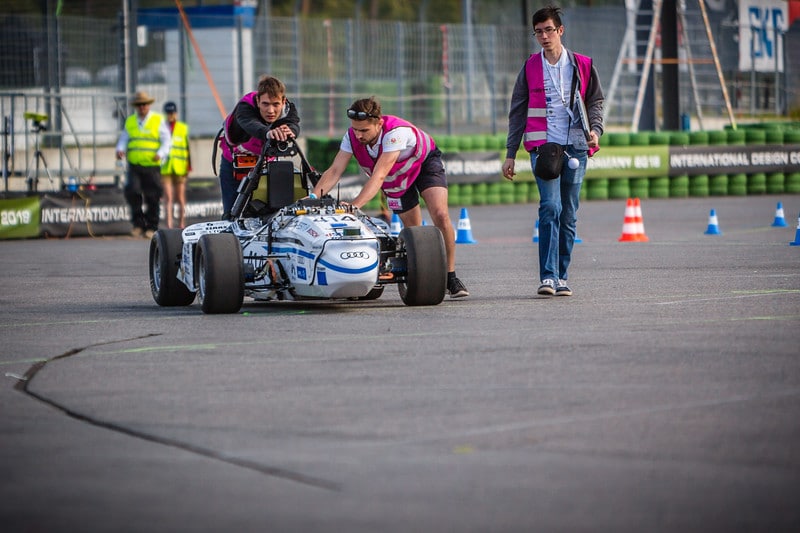Insulin, quantum theory and the Nash equilibrium are just a few of the landmark discoveries that university student researchers have made pivotal contributions to.
Autonomous vehicles — one of the biggest transportation breakthroughs of the past century — are no different. In fact, much of today’s self-driving technology was born out of university challenges funded by the U.S. Defense Advanced Research Projects Agency (better known as DARPA) in 2005 and 2007.
The Formula Student Germany (FSG) Driverless competition, which took place earlier this month in Hockenheimring, Germany, is one of the arenas in which students have the chance to test and demonstrate their skills in autonomous vehicle development.
Now in its second year, the competition is a growing part of the FSG international design event, which draws 4,000 students from 25 countries. To advance their designs, five of the 17 FSG Driverless student teams — including the winning group from ETH Zurich — chose to engineer their autonomous vehicles on powerful NVIDIA GPUs.
“The FSG Driverless challenge is another step where we have the chance to learn a lot about the latest technologies in the field of autonomous driving,” said Tu Pham, chief technical officer of the Technical University of Darmstadt’s racing team. “By using NVIDIA GPUs for our computer vision neural networks, we experienced a huge increase in performance — and we haven’t even come close to its computational limits.”
All-Around Competition
The teams competing in this year’s FSG Driverless competition were tasked with designing and deploying a self-driving car from the ground up.
The student teams must independently create a concept and business plan for their vehicle, build it and undergo intense technical inspection as well as “scrutineering” — rigorous oversight from the competition’s officials. Then, the teams must test their vehicle in several disciplines on the racetrack during the FSG event week.
The driverless competition takes place alongside combustion and electric vehicle competitions, which also require teams to design, engineer and compete with their own innovations.
In the week leading up to the final challenges, each team’s technical design, manufacturing and cost plans are closely evaluated. Those results are then combined with scores in the static — design, business plan, strategy — and dynamic, or racetrack, disciplines. The teams with the highest overall scores achieve top placement.
A GPU-Powered Finish
As development progressed from blueprints to the racetrack, students said NVIDIA GPUs made the process of advancing their deep learning algorithms seamless.
“As our goal as a first-year team was to complete all dynamic events with similar lap-times as last year’s winner, we needed to aim high,” said Mathias Backsaether, chief driverless engineer the Norwegian University for Science and Technology’s racing team. “For this, we used NVIDIA, facilitating easy testing of our autonomous software.”
The work these teams accomplished in building and deploying a driverless vehicle will contribute to the overall development of this groundbreaking technology. And NVIDIA will continue to partner with university researchers around the globe, helping students make their designs and innovations a reality, and showcasing their findings on the global stage.
